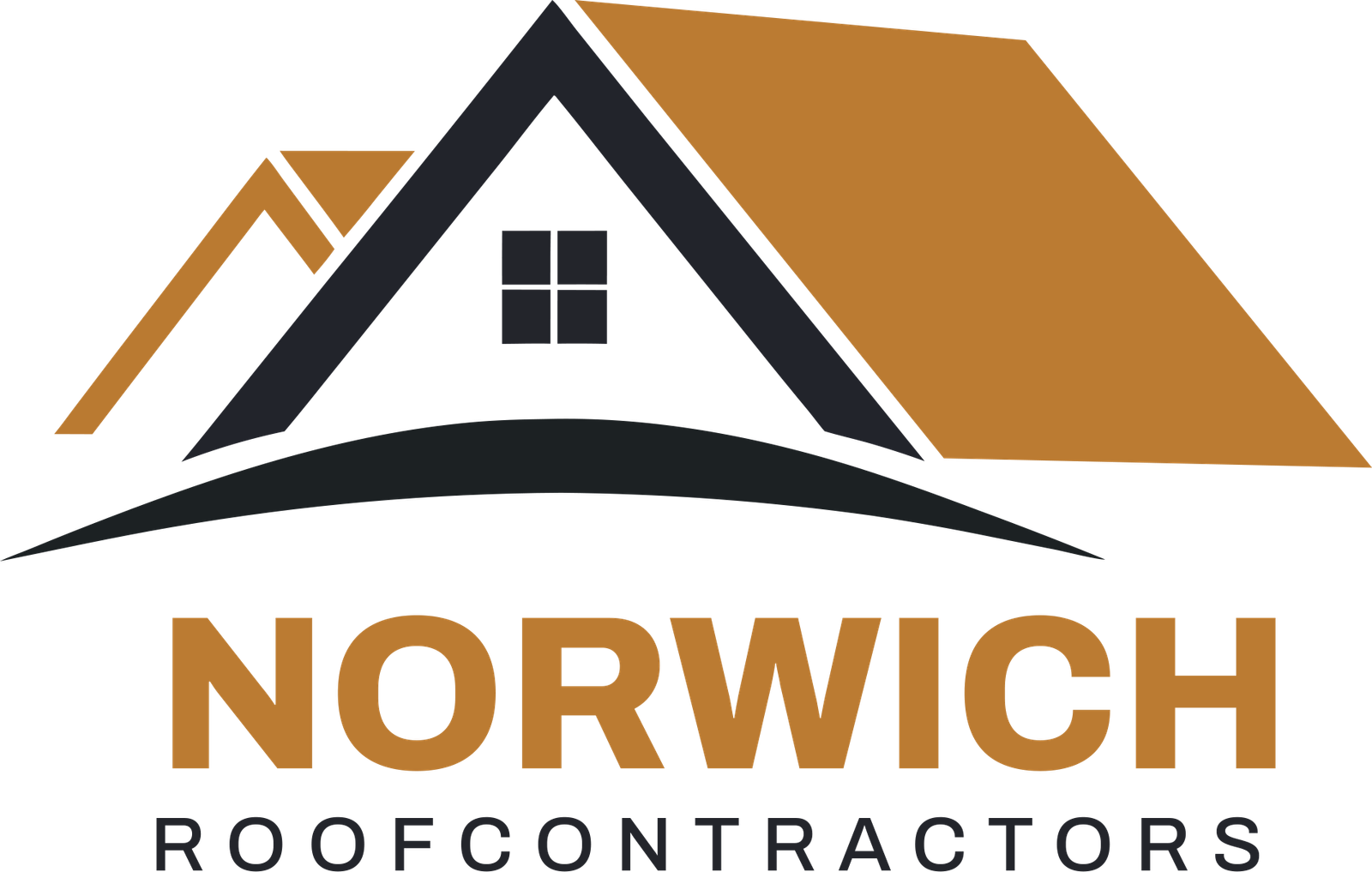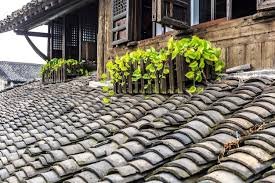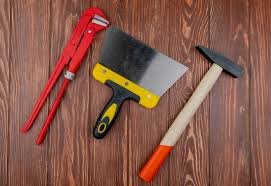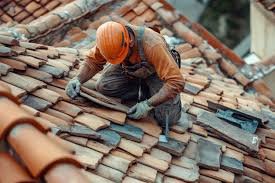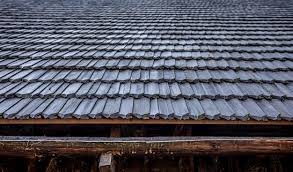Choosing the best roofing type for your home in Norwich, Norfolk, is a vital decision that influences both aesthetic appeal and practicality. There are multiple options available from which homeowners can select the shape that suits the local climate conditions and architectural styles. Pitched roofs are popular for their ability to shed snow, hip roofs enhance stability against winds, and flat roofs can be a modern choice for extensions. All these present unique features to ensure owners can find the perfect fit for their needs and preferences.
6 Types of Roof For a Safe and Secure Norwich Home
Norwich’s unique architecture includes every option from historic structures to contemporary homes. This diversity offers you a range of best roofing types across the region that not only ensure a beautiful home exterior but also functional in coastal climate of Norfolk.
Gable Roofs | Blend Simplicity and Style
Best Suited for— Traditional homes and suburban properties in regions with moderate weather looking for a classic, adaptable roof style.
Gable roofs feature two sloping sides that meet at a ridge to form a triangular shape. This design is the most common and preferred roofing type in Norwich for its simplicity and efficiency. Due to their distinctive shape, gable roofs are also referred to as pitched or peaked roofs.
Benefits
- Excel in areas with moderate rainfall and snow. Gable roof’s steep slopes can effectively shed water and prevent accumulation, making them ideal for Norfolk weather conditions.
- Generally, less expensive to construct compared to more complex roofing types. The simple design of the gable reduces your labour and material costs.
- Allows greater attic space which can be utilised for storage or even converted into living areas. Gable shape improves ventilation of your Norwich home and indirectly contributes to energy efficiency by reducing moisture buildup (the most common issue in Norfolk).
- Complement various architectural styles, providing a classic look and enhancing overall aesthetic appeal.
Drawbacks
- One significant disadvantage of gable roofs is their susceptibility to wind damage. Triangular shape can attract wind and lead to deterioration of material over time.
- Require frequent maintenance and repairs due to wind-related issues and shingle wear.
Ready to upgrade your roof?
Contact a roofer in Norwich today for free expert advice and affordable quality service to level up your home aesthetics for years to come.
Flat Roofs | Modernity with Maximum Functionality
Best Suited for— Modern homes and commercial properties to maximise potential space for rooftops, gardens or solar panels.
Flat roofs have a very slight slope, typically less than 10 degrees. This roofing type offer a minimalist and contemporary look to Norwich homes and create a unique aesthetic while providing several practical benefits. Flat roofs incorporate common roofing materials such as EPDM rubber, PVC, and modified bitumen to provide durability and water resistance tailored to Norfolk’s climate.
Benefits
- Flat roofs are the most budget-friendly and affordable option for Norwich homeowners, with additional useable space on the rooftop.
- Designed with insulation materials, the flat roofs help regulate indoor temperatures, potentially lowering energy costs for heating or conditioning systems.
- The level surface of the flat type simplifies maintenance and inspection, which benefits homeowners by allowing them to spot issues and perform timely repairs without delaying major damage.
- Flat roofing allows creative architectural designs and modifications for future expansion and installation of equipment like HVAC systems without significant structural changes. This versatility makes it a more beneficial and popular roof type in Norwich, Norfolk.
Drawbacks
- This type of roof Require well-designed and properly maintained drainage systems, as the flat roof is prone to water pooling due to low slope design.
- Vulnerable to leaks at seams and joints.
- Shorter lifespan than pitched roofs because materials are directly exposed to harsh weather or UV rays.
Do you Know?
Flat roofs are making up approximately 32% of the UK roofing market by 2024. They are preferred the most among both residential and commercial sectors for extra space feature.
Hip Roofs | Durability and Strength are Keys
Best Suited for— Areas that experience high winds or those looking for a balanced, aesthetically pleasing roof style.
Hip roofs have four slopes on all sides that meet at a ridge on top. They come in various shapes, including a pyramid ( where all sides are equal) or clipped (where the ends are cut off). Most hip roofs often have overhanging eaves that provide shade and protection from rain and enhance the durability of buildings. To add more benefits, they are constructed with the most valuable roofing materials, like asphalt, metal or tiles, ensuring they are the best roof type in Norwich, Norfolk.
Benefits
- Greater structural strength compared to gable roofs.
- Aerodynamic shape reduces wind resistance and minimises the risk of damage during storms. This is particularly advantageous in coastal areas like Norfolk, where wind exposure is significant.
- Sloped designs allow rainwater and snow to drain efficiently, reducing the chances of water pooling and leaks.
- Prevent debris accumulation and save time and money from repairs in the long run.
- Symmetrical style contributes to the classic and elegant look that enhances the curb appeal, making it a versatile option for both traditional and modern homes.
Drawbacks
- Hip roofs can be more complex to design and build than simpler roof types, leading to higher installation costs.
- The design includes multiple slopes, which can create several seams and joints that may be susceptible to leaks if not properly sealed.
- In colder climates, snow can accumulate in the valleys of hip roofs and cause ice dams that, when melted, refreeze at the eaves.
Mansard Roofs | Curb Appeal and Extra Space in One Design
Best Suited for— Properties where space is limited or to create additional rooms.
The mansard roof is a French-inspired style featuring two slopes on each side. The lower slope is steeper, with dormer windows to natural light into the attic than the upper one. This unique silhouette can be constructed in various styles, including convex, concave or straight angles. You will find many historic buildings in Norwich have mansard roofs, preserving the architectural integrity of older structures.
Benefits
- The steep lower slopes of this roofing type create significant attic space that can be utilised for living areas or storage without expanding the building’s footprint.
- The design allows for better heat distribution within the home and reduces the heating cost during colder months, which makes mansard the ideal roof type for Norwich’s stormy climate.
- Dormer windows provide ample natural daylight and ventilation to the upper levels of the home.
- The double-pitched French Renaissance style adds character and sophistication to the home exterior for those looking to elevate the property’s value and curb appeal.
- Mansard roofs offer easy vertical expansion in the future without altering the overall height of the building.
Drawbacks
- Not recommended roofing type for areas with extreme weather conditions. The low pitch of the upper slope can lead to water and snow accumulation which can cause potential damage to the structure.
- Higher installation costs need skilled labour and professional expertise specifically in this roof type.
- Adding a mansard roof may require additional permits and affect property taxes due to increased square footage.
Saltbox Roof | Traditional Design with Great Functionality
Best Suited for— Colonial-type homes or properties that aim to achieve a distinctive, historic look in line with Norwich’s architectural heritage.
Saltbox roofs feature an asymmetrical design with one long, steep slope and one shorter, shallower slope. This unique structure resembles the wooden boxes used historically to store salt, hence its name. Saltbox roofs originated in colonial New England and have remained popular due to their practicality and aesthetic appeal.
Benefits
- The steep pitch prevents snow accumulation and reduces structural damage during winter months.
- Allows winds to flow smoothly over the roof, providing better resistance against uplift forces.
- Offers a distinctive and visually interesting look to your Norwich home.
- With fewer angles and joints compared to more complex roof designs, saltbox roofs minimise maintenance costs.
- Highly energy efficient by reducing the absorption of heat.
- Often constructed with durable materials like wood shakes and metals, it contributes to longevity and resistance to the harsh climate of the roof. This combination makes it one of the top roof types for Norwich homes with classic aesthetics.
Drawbacks
- The angled ceiling can lead to smaller room sizes and reduced headroom.
- Accessing the upper levels of the saltbox can be challenging due to its slanted form.
| Our Experience with Saltbox Roofs About months ago, a family in Norwich contacted us to restore a historic 18th-century home featuring a saltbox design. They wanted to preserve this distinctive roofing style while demanded us to modernize it and fix any needed repairs to the structure for improved insulation. Our professional team selected a composite roofing material specifically designed for traditional appearance while offering low future maintenance needs, enhanced durability, and excellent weather resistance to the Norfolk coastal climate. This material has a lifespan of 50 years and great reflectivity properties. Combining these benefits with the steep slope on one side proved very helpful during the Norwich rainy season (reviewed by the client). This also improved energy efficiency by 25% and cut down customer’s energy bills. Fulfilling the demands of the customer, the restoration preserved the traditional charm while providing a well-insulated interior for healthy living. |
Jerkinhead | Unique Combo of Gable and Hip Roof
Best Suited for—Found in Tudor-style houses, craftsman bungalows, Queen Anne homes, high-windy areas, or for those who want traditional plus modern charm.
Jerkinhead roofs are known as clipped gable and half-hipped roofs that combine the elements of both gable and hip roofs. It features two sloping sides that meet at a ridge like gable, but the ends are clipped or truncated, resembling a hipped roof. Jerkinhead roofs are constructed with various incredible materials like shingles, tiles and slate, allowing for customisation based on the home’s style.
Benefits
- The hipped ends of the jerkinhead roof provide enhanced structural strength and resistance to high winds.
- Jerkinhead style offers more headroom in the attic and upper levels than the traditional hip and saltbox.
- The clipped section results in a shorter seam, which is less prone to leaks and contributes to the overall durability of the structure. This offers homeowners the best roof type for Norfolk homes without worrying about frequent maintenance.
- Incorporated Sloping design in the style facilitates efficient drainage of rainwater and snow.
- Jerkinhead shape also mitigates wind uplift issues that make a perfect combination with asphalt shingles for the Norwich Coastal climate.
Drawbacks
- The complexity of the design makes it difficult to install or requires experience.
- Higher initial costs of labour and materials lead to increased expenses.
- Clipped gables can be difficult to access for cleaning and repairs, complicating maintenance efforts.
Summarizing Different Roofing Types
Norwich’s rich mix of traditional and modern architecture offers numerous roofing types to style your house according to personal preferences and weather considerations. These include the classic look of a gable, the practicality of a flat roof, or a historical-style saltbox, each serving unique benefits. Selecting a roof type that best withstands Norfolk’s climate keeps you safe and elevates your home’s aesthetic appeal.
